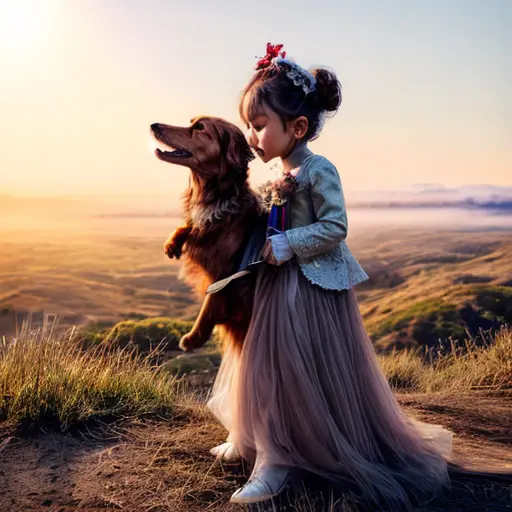Understanding Conservation Child Development: An Introduction to the Concept and Importance
Understanding Conservation Child Development: An Introduction to the Concept and Importance is like discovering a hidden treasure chest filled with nuggets of wisdom for parents and caregivers. Picture this: a bunch of adorable little humans, armed with their tiny shovels of curiosity, digging deep into the soil of their surroundings to uncover the wonders of nature. Conservation child development is all about nurturing these budding explorers, teaching them to appreciate and protect the environment while fostering their cognitive, emotional, and social growth. It's like raising a generation of eco-warriors who can tell you the difference between a tree and a shrub, and who understand that recycling is not just a fancy dance move. So, grab your safari hat and join the adventure of conservation child development, where kids learn to save the world one mud pie at a time!
The Role of Parents and Caregivers in Fostering Conservation Child Development
Conservation child development refers to the cognitive milestone in a child's development where they acquire the ability to understand that certain properties of an object, such as its quantity or volume, remain the same even when its appearance or arrangement changes. For example, if you pour water from a short, wide glass into a tall, narrow glass, a child who has not yet reached the conservation stage may believe that the amount of water has changed. However, a child who has developed conservation skills will understand that the quantity of water remains the same despite the change in appearance. This milestone in cognitive development was first introduced by the renowned psychologist Jean Piaget in his theory of cognitive development.
The Role of Parents and Caregivers in Fostering Conservation Child Development is like being the captain of a ship, guiding little sailors towards a greener and more sustainable future. As parents and caregivers, we have the power to shape the minds and hearts of these young explorers, instilling in them a deep love and respect for the environment. We become the cheerleaders, encouraging their curiosity and providing them with opportunities to connect with nature. From planting seeds in the backyard to going on nature walks, we become their partners in crime, teaching them the importance of conservation and showing them that even the smallest actions can make a big difference. So, let's grab our compasses and embark on this incredible journey of conservation child development, where parents and caregivers become the wind in their sails, propelling them towards a brighter and greener tomorrow.
Environmental Education and its Impact on Conservation Child Development

Environmental education is like a superhero cape for conservation child development, empowering young minds to become guardians of the planet. By integrating environmental education into their lives, children not only gain knowledge about the natural world but also develop a deep sense of responsibility towards it. Through hands-on activities, interactive lessons, and immersive experiences, environmental education fosters a love for nature and an understanding of the interconnectedness of all living things. It teaches children the importance of conserving resources, reducing waste, and protecting biodiversity, instilling in them a lifelong commitment to sustainable practices.
The impact of environmental education on conservation child development is profound. It equips children with the tools to become critical thinkers, problem solvers, and advocates for the environment. By engaging in activities such as recycling, composting, and gardening, children learn about the impact of their actions on the planet and develop a sense of agency in making positive changes. They become more aware of their ecological footprint and are motivated to find creative solutions to environmental challenges.
Furthermore, environmental education nurtures a sense of wonder and awe in children, igniting their curiosity and sparking a desire to explore the natural world. It encourages them to ask questions, make observations, and seek answers, fostering their cognitive development. Through hands-on experiences like planting trees or observing wildlife, children develop a deeper connection with nature, which in turn enhances their emotional well-being and empathy towards all living beings.
In addition, environmental education promotes social development by encouraging collaboration, teamwork, and communication. Children engage in group projects, participate in environmental clubs, and work together to solve environmental problems. This not only strengthens their social skills but also cultivates a sense of community and collective responsibility. They learn that conservation is not an individual effort but a shared responsibility that requires cooperation and collaboration.
In conclusion, environmental education plays a vital role in conservation child development by nurturing a love for nature, fostering critical thinking and problem-solving skills, and promoting social and emotional development. By equipping children with knowledge, skills, and a sense of responsibility, environmental education empowers them to become stewards of the environment, ensuring a sustainable future for generations to come.
Promoting Conservation Child Development in Schools and Communities: Strategies and Best Practices
Conservation child development refers to a cognitive milestone in children's development where they understand that certain properties of objects, such as quantity or volume, remain the same even when their physical appearance changes. For example, a child who understands conservation would know that pouring water from a short, wide glass into a tall, narrow glass does not change the amount of water.
Promoting conservation child development in schools and communities is like sowing seeds of environmental consciousness that will bloom into a greener future. By implementing strategies and best practices, we can create environments that inspire and empower children to become active participants in conservation efforts. Schools can integrate environmental education into their curriculum, incorporating hands-on activities, field trips, and guest speakers to engage students in real-world conservation experiences. Communities can organize nature walks, clean-up campaigns, and recycling initiatives to involve children in practical conservation actions. By fostering partnerships between schools, families, and community organizations, we can create a cohesive network that supports and reinforces conservation child development. Together, we can cultivate a generation of environmentally conscious individuals who will protect and preserve our planet for years to come.

